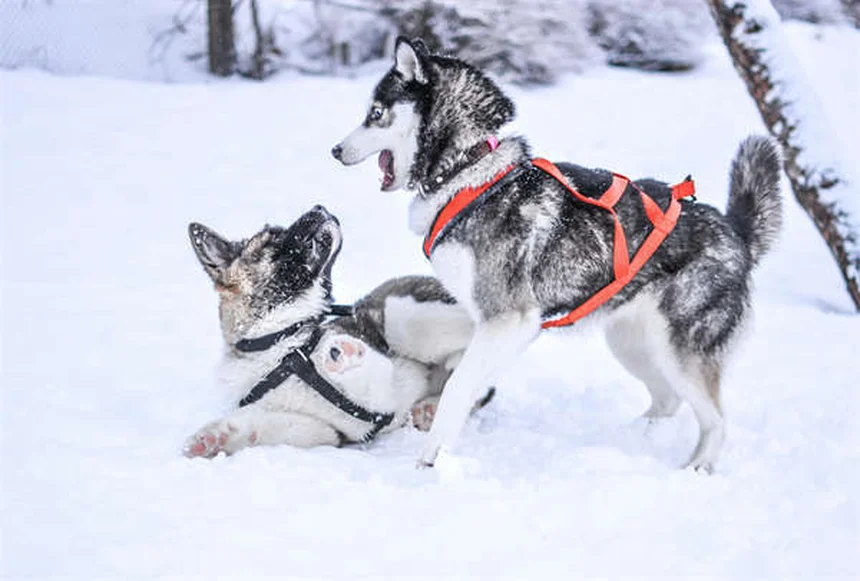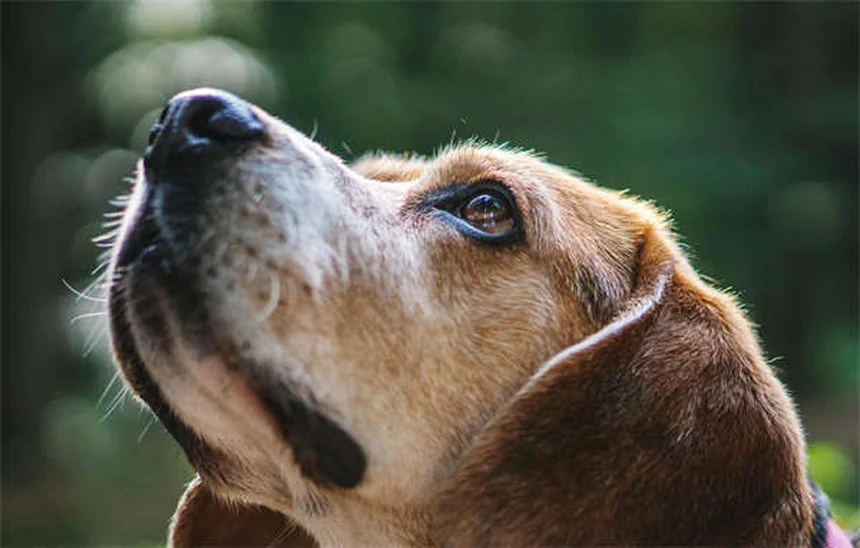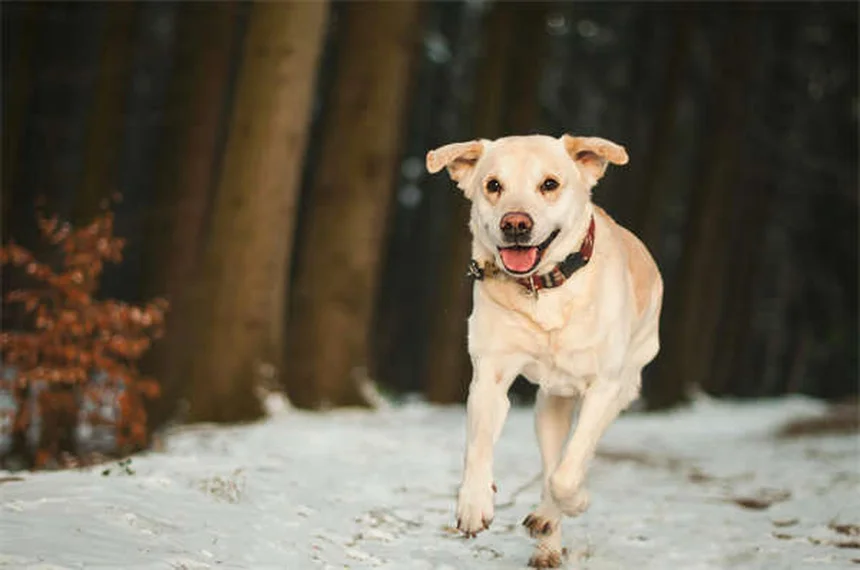What are wolf teeth in horses? The answer is simple: they're small, often unnecessary premolars that about 70% of horses develop. Located right in front of the first cheek teeth, these evolutionary leftovers from when horses were forest browsers rather than grass grazers serve no real purpose for modern horses. While they're generally harmless, we've found that wolf teeth can sometimes interfere with bit placement, especially in performance horses. That's why many trainers recommend removal before serious training begins - typically around age two. But here's the thing: not every horse needs them removed! Some go their whole lives with wolf teeth without issues. The key is understanding your individual horse's needs and working closely with your vet to make the best decision. In this guide, we'll walk you through everything you need to know about identifying wolf teeth, when removal makes sense, and what the procedure involves.
E.g. :Is Your Dog Mad at You? 5 Signs & What They Really Mean
Advertisement
- 1、What Are Wolf Teeth in Horses?
- 2、Do Wolf Teeth Cause Problems?
- 3、The Wolf Tooth Removal Process
- 4、Making the Right Decision for Your Horse
- 5、Fun Wolf Tooth Facts
- 6、Understanding Wolf Teeth Through History
- 7、Modern Dental Practices
- 8、Wolf Teeth in Different Disciplines
- 9、Common Myths Debunked
- 10、Wolf Teeth Around the World
- 11、FAQs
What Are Wolf Teeth in Horses?
The Basics of Wolf Teeth
Let me tell you about these fascinating little teeth called wolf teeth. They're actually the first premolars in your horse's mouth, sitting right in front of those big cheek teeth. About 70% of horses develop them, usually between 5-12 months old - that's younger than most horses start serious training!
Here's something cool: wolf teeth are like tiny evolutionary leftovers. Millions of years ago when horses were smaller forest-dwellers munching on twigs and brush, these teeth were much larger and actually useful. But as horses evolved into grass-eating machines, wolf teeth became about as necessary as a screen door on a submarine. They're like the appendix of horse teeth - just hanging around not doing much.
Where You'll Find Them
Most commonly, wolf teeth appear in the upper jaw (that's the maxilla for you science folks), but sometimes they pop up in the lower jaw too. They can show up on one side or both - horses don't follow strict dental fashion rules!
Fun fact: unlike other horse teeth that keep growing throughout life, wolf teeth are one-and-done. Once they come in, that's their final form. And get this - gender doesn't matter one bit when it comes to developing wolf teeth. Fillies, colts, and geldings all have equal chances of growing them.
Do Wolf Teeth Cause Problems?
 Photos provided by pixabay
Photos provided by pixabay
Potential Issues to Watch For
Now, you might be wondering: "If these teeth are useless, should I worry about them?" Great question! Generally, wolf teeth are about as troublesome as a sleeping kitten - mostly harmless. But like any tooth, they can occasionally cause problems if they get fractured or infected.
Here's the thing that really matters for performance horses: bit placement. Those little wolf teeth can interfere with where the bit sits in your horse's mouth. Imagine trying to eat an apple while someone's poking your gums - not comfortable, right? That's why many trainers recommend removal before serious training begins.
When Removal Makes Sense
Let me put it this way: if your horse is going to be wearing a bit regularly, wolf teeth removal is like getting your wisdom teeth out before they cause trouble. It's a preventative measure that can save you and your horse from headaches (or should I say toothaches?) down the road.
But here's the kicker - not every horse needs them removed. Some go their whole lives with wolf teeth and never have an issue. That's why you should always consult with your vet about what's best for your specific horse.
The Wolf Tooth Removal Process
Timing and Preparation
Most vets recommend removing wolf teeth when the horse is about two years old, often during their first dental float or even during castration. Talk about multitasking! The procedure is pretty straightforward:
| Step | What Happens | Time Required |
|---|---|---|
| Sedation | Horse gets nice and relaxed | 5-10 minutes |
| Anesthetic | Numbing the area (usually lidocaine) | 5 minutes |
| Extraction | Using special tools to remove the tooth | 5-30 minutes |
The actual removal time depends on the tooth size - some wolf teeth are tiny while others can be surprisingly large. The vet uses special tools to gently loosen and remove the tooth, making sure to get the whole thing including the root.
 Photos provided by pixabay
Photos provided by pixabay
Potential Issues to Watch For
Here's something crucial: "What about tetanus shots?" Another excellent question! The mouth is prime real estate for tetanus bacteria, so your horse should absolutely be up-to-date on vaccinations before any dental work.
After removal, your horse might be a little sore - wouldn't you be? But they typically bounce back quickly. Just go easy on the bit work for a few days and keep an eye out for any signs of infection. Most horses handle the procedure like champs and are back to their normal selves in no time.
Making the Right Decision for Your Horse
Factors to Consider
When deciding whether to remove wolf teeth, think about your horse's future career. A pasture pet might never need them out, while a performance horse probably will. It's like choosing cleats for a soccer player versus slippers for a couch potato - different needs for different lifestyles!
Here's my advice: have a good chat with both your vet and your trainer. They can help you weigh the pros and cons based on your horse's individual situation. And remember - there's no rush! Wolf teeth removal can happen at any age if needed.
Long-Term Benefits
For performance horses, removing wolf teeth early can prevent a whole host of potential issues down the road. We're talking about better bit acceptance, more comfortable riding experiences, and fewer dental emergencies. It's one of those "ounce of prevention" situations that can really pay off.
But at the end of the day, every horse is different. Some might never notice their wolf teeth, while others might be constantly bothered by them. That's why working with professionals you trust is so important - they'll help you make the best call for your equine partner.
Fun Wolf Tooth Facts
 Photos provided by pixabay
Photos provided by pixabay
Potential Issues to Watch For
Did you know that wolf teeth are like tiny time capsules? They give us clues about how horses used to live and eat. Those ancient forest-dwelling horses needed different dental equipment than our modern grass-munching buddies. Nature's pretty cool about adapting to change!
Here's a wild thought: if horses continue evolving, maybe in another million years they won't have wolf teeth at all. But for now, we've got to deal with these little dental quirks in our modern equines.
Breed Variations
While wolf teeth appear in about 70% of horses overall, some breeds seem more likely to develop them than others. It's not a hard and fast rule, but generally speaking, larger breeds tend to have them more often than smaller ones. Another interesting tidbit: wolf teeth in the lower jaw are much rarer than upper jaw ones.
So next time you're checking your horse's teeth, take a peek for these little evolutionary leftovers. They're a fascinating reminder of how far horses have come - and how much they've changed!
Understanding Wolf Teeth Through History
Ancient Equine Dentition
You'd be amazed how much we can learn about prehistoric horses from these tiny teeth! Fossil records show that early horse ancestors like Eohippus had full sets of wolf teeth that were actually functional. Back then, horses were about the size of dogs and needed these extra teeth to grind tough forest vegetation.
Fast forward a few million years, and you'll see why wolf teeth became obsolete. As horses grew larger and switched to grazing grasses in open plains, their dental needs changed dramatically. The modern horse's mouth is basically a highly efficient grass-processing machine - except for those stubborn little wolf teeth that refuse to disappear completely!
Cultural Perspectives
Ever wonder why they're called "wolf teeth"? It's not because horses turn into werewolves (though that would make for an interesting Halloween costume). The name comes from old European folklore where people believed these teeth gave horses a wild, wolf-like temperament. We now know that's complete nonsense, but the name stuck!
Different cultures have had various beliefs about wolf teeth. Some Native American tribes considered them good luck charms, while medieval European blacksmiths would sometimes incorporate them into special bits. Today, we just see them as a routine dental consideration - though they do make for great conversation starters at the barn!
Modern Dental Practices
Technological Advances
Gone are the days of crude wolf tooth removal methods! Modern equine dentistry has come a long way with specialized tools that make the procedure safer and more comfortable. Vets now use everything from precision elevators to radiographic imaging when dealing with tricky cases.
One cool innovation is the use of dental lasers in some practices. While not yet standard for wolf teeth removal, this technology allows for incredibly precise work with minimal bleeding. Who knows - maybe in a few years we'll have robot-assisted wolf tooth extractions!
Alternative Approaches
Not every horse with wolf teeth needs them removed immediately. Some trainers prefer to try bit adjustments first, using specially designed bits that avoid contact with the wolf teeth area. It's like giving your horse custom-fitted shoes instead of performing foot surgery!
There's also growing interest in natural horsemanship approaches that minimize bit use altogether. For these horses, wolf teeth might never become an issue. But let's be real - most performance horses will need to wear bits, so removal often makes the most sense in the long run.
Wolf Teeth in Different Disciplines
Racing Considerations
In the high-speed world of horse racing, every tiny advantage matters. That's why nearly all racehorses have their wolf teeth removed early. Can you imagine trying to focus on running your fastest while some tiny tooth is getting bumped by the bit? Not exactly a recipe for peak performance!
Interestingly, some trainers believe that removing wolf teeth can actually improve a racehorse's breathing by creating more space in the mouth. While the science isn't completely settled on this, it's another potential benefit to consider for your speed demon.
Dressage and Show Jumping
Precision sports like dressage demand incredible sensitivity to the bit. A tiny wolf tooth could mean the difference between a perfect pirouette and a frustrated horse. That's why most upper-level dressage horses have their wolf teeth removed as youngsters.
Show jumpers present an interesting case - some trainers prefer to wait and see if the wolf teeth actually cause problems before removing them. The logic? These horses typically carry their heads higher, which might put less pressure on the wolf tooth area. But when in doubt, most err on the side of removal.
Common Myths Debunked
Size Matters?
Here's a persistent myth: "Bigger wolf teeth cause more problems." Not necessarily true! Sometimes the tiniest wolf teeth can be the most irritating because they create a sharp point right where the bit sits. It's not about size - it's about location and how the tooth interacts with the bit.
Another misconception is that wolf teeth continue growing like other horse teeth. Nope! Once they erupt, that's their final size. They don't wear down or grow longer, which is actually part of why they can cause issues - they don't adapt to the changing shape of the horse's mouth over time.
Behavioral Impact
Some folks claim that wolf teeth make horses head-shy or resistant to the bit. While uncomfortable wolf teeth certainly can cause these issues, they're not the automatic cause of every behavioral problem. That would be like blaming all human grumpiness on wisdom teeth!
The truth is more nuanced. If your horse suddenly develops head-tossing or bit resistance, wolf teeth could be a factor - but so could ill-fitting tack, training methods, or other dental issues. Always get a professional opinion before jumping to conclusions.
Wolf Teeth Around the World
Global Prevalence
Did you know that wolf teeth occurrence varies by region? Studies show that certain geographic populations of horses have higher or lower rates of wolf teeth development. For example, some Asian horse breeds seem to have lower incidence rates compared to European breeds.
Climate and traditional breeding practices might play a role in these differences. Horses bred for centuries in harsh environments might have developed slightly different dental characteristics. It's fascinating how location can influence something as specific as wolf teeth!
International Removal Practices
Not every country approaches wolf teeth removal the same way. In some European nations, removal is almost universal, while in parts of South America, it's less common unless problems arise. These differences often reflect local traditions and the predominant equestrian disciplines in each region.
One universal truth? No matter where you are, working with a knowledgeable equine dentist is key. Whether you're in Texas or Tokyo, your horse deserves the best possible dental care tailored to their individual needs and your riding goals.
E.g. :Equine Wolf Teeth – The Horse
FAQs
Q: Do all horses have wolf teeth?
A: Nope! Only about 70% of horses develop wolf teeth, and they can appear on one side or both. Here's something interesting - it doesn't matter if your horse is a filly, colt, or gelding, their chances of having wolf teeth are about the same. These little teeth typically show up when horses are between 5-12 months old, long before most serious training begins. Unlike other horse teeth that keep growing throughout life, wolf teeth come in once and that's it - no continuous growth. We often compare them to human wisdom teeth - not everyone gets them, and when they do appear, they're not always problematic.
Q: At what age should wolf teeth be removed?
A: Most vets recommend removing wolf teeth when horses are about two years old, before serious bit training begins. But here's the good news - they can be removed at any age if they start causing problems. Many owners choose to have the procedure done during the horse's first dental float or even during castration, since the horse will already be sedated. The actual removal typically takes between 5-30 minutes depending on the tooth size. Just remember - your horse should be up-to-date on tetanus shots before any dental work, as the mouth is prime territory for tetanus bacteria.
Q: Can wolf teeth cause health problems for my horse?
A: Generally, wolf teeth are about as troublesome as a sleeping puppy - mostly harmless. However, like any tooth, they can occasionally become fractured or infected. The bigger issue we see is with performance horses - those little teeth can interfere with bit placement, making riding uncomfortable for your equine partner. Think about how annoying it would be to have someone constantly poking your gums while you're trying to eat! That's why many trainers recommend removal for horses that will be working with bits regularly. But if your horse is more of a pasture pet, those wolf teeth might never cause any issues at all.
Q: What's involved in wolf teeth removal?
A: The procedure is pretty straightforward and usually done with the horse standing while sedated. First, your vet will numb the area with local anesthetic (typically lidocaine). Then, using special dental tools, they'll gently loosen the tooth by stretching the surrounding ligament before removing it with forceps. The whole process can take anywhere from a few minutes to half an hour, depending on the tooth size. Aftercare is simple - just go easy on the bit work for a few days and watch for any signs of infection. Most horses bounce back quickly and are back to their normal selves in no time.
Q: How can I tell if my horse has wolf teeth?
A: Great question! Wolf teeth sit right in front of the first cheek teeth - you'll typically find them in the upper jaw, though occasionally they appear in the lower jaw too. They're usually small (about the size of a pea or smaller), but can sometimes be surprisingly large. The best way to check is to gently lift your horse's lip and look for these little teeth about an inch or so in front of the first big cheek teeth. If you're not sure, your vet can easily identify them during a routine dental exam. Remember - not seeing them doesn't necessarily mean they're not there, as some wolf teeth don't fully erupt through the gums.

